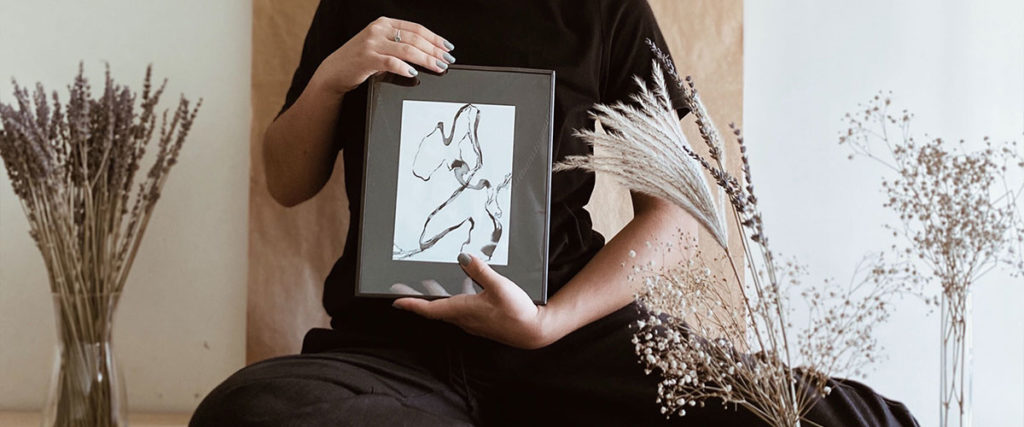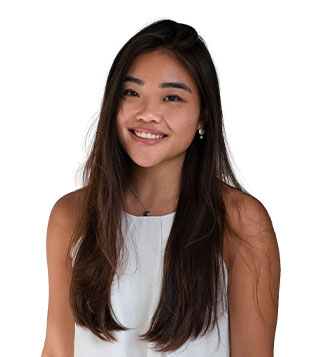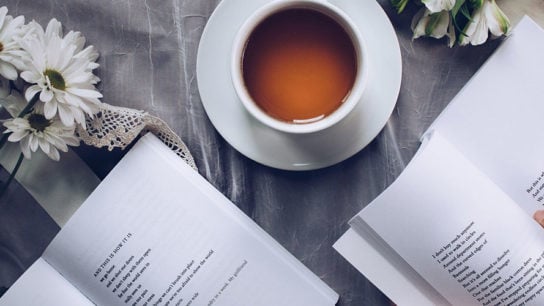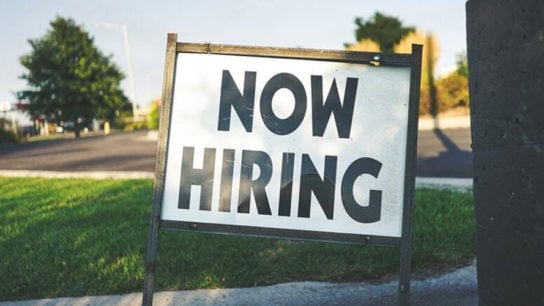The creative visionary behind Fonder Studio, Joy Lee talks to Hive Life about the power of creative expression in breaking down barriers to conversation.
Having grown up in the hustle and bustle of Hong Kong, Joy Lee eventually found mindfulness and solace through her artistic work. Her passions led her to establish Fonder Studio earlier this year – an online creative studio that inspires others to cultivate stillness, emotional connection, and presence. Specialising in Sumi paintings, branding, and creative strategy, Joy uses her platform to connect with others and serve as a constant reminder for us all to slow down and reconnect with ourselves.
Entering her final year at Columbia University, Joy’s creative work and potential have only just begun. Hive Life sat down with Joy to discuss the power of art in connecting strangers, building bridges, and forming emotional connections.
Tell me about your work at Fonder Studio. What inspired you to paint?
Slowing down and creating things that are meaningful and valuable to people is at the heart of what I do. My paintings tend to be inspired by a phrase, an emotion, a question, a concept, or an idea that I want to explore visually. Painting, for me, is an embodied experience – an expression that goes beyond just my mind thinking about a concept or meditating on an idea.
However, growing up, I hated painting. I thought it was the worst because I couldn’t control where the paint went and it frustrated the heck out of me. Painting was so unpredictable for me, and I just wanted to control it. Unlike painting, with my typography and graphic design work, I could literally go down to the pixel, designing where each element will be, erasing and modifying things. But with painting, I couldn’t. Every single movement is a layer unto itself and I realised that this was exactly where I needed to be – in a place where certainty and control didn’t exist. It was a metaphor for how I wanted to respond to my life moving forward: an embrace of the future, of the unknown, as opposed to knowing and planning my life out.
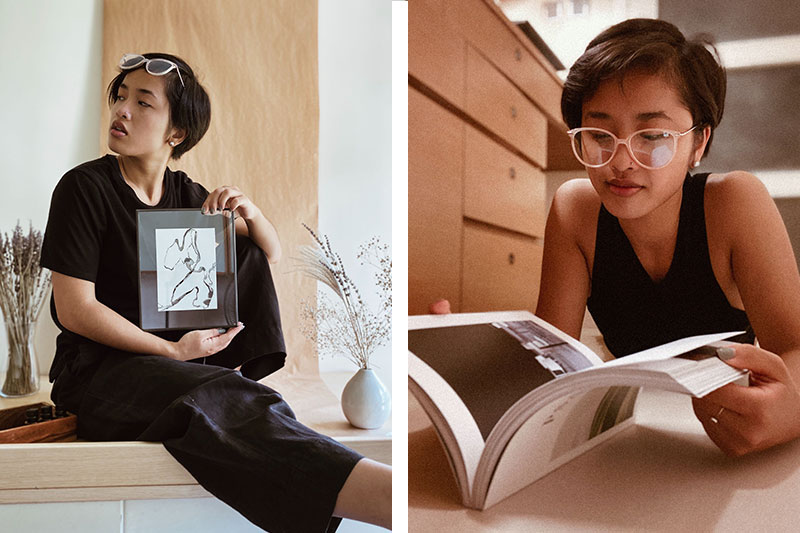
How did your cultural upbringing influence your art?
I grew up with a lot of hustle, efficiency, and performativity at the forefront of my identity. My parents were workaholics, my brothers were out doing sports, and I was constantly moving at 10 million miles an hour. The culture in Hong Kong was very much defined by this ‘work hard, play hard’ mentality, always trying to be the best. You can’t be mediocre in Hong Kong – and still, I’ve loved that because it was that mentality that pushed me beyond the boundaries I perceived for myself.
But when I got to college in America, I took away this: an exploration of the self. I began to understand and process emotional health and relational wellness for my heart. I was doing my course, plays, internships, and volunteering – all at the same time. Here’s the thing: when I live, I live through experience. I don’t slow down enough to have my body catch up with itself. Eventually, when it did, I realised I was so emotionally disconnected to how I was feeling physically that I couldn’t even express my emotions anymore. My soul was crying out for help. Spiritually, I felt like I was drowning. I realised at that point my life was completely out of my hands. These consequences compounded, and it took exploring a medium that I had never explored before, to encounter freedom and cultivate a place of surrender.
I use Sumi ink (Chinese calligraphy ink) and ‘毛笔’ (máo bǐ; Chinese brush) to paint – so the medium is Eastern. The psychological aspect is more culturally American, in the sense that I explore more of the emotional, socio-cultural aspects in my art. In a lot of Eastern paintings – specifically Chinese – there’s this essence of yin and yang. It’s about balance, seeing negative space as positive, and artists don’t tend to fill up the entire canvas, which is more commonplace in American work.
How does your art make you feel?
In one word, I would say it makes me feel: wonder. It makes me feel at peace. I like using the image of being underwater – that feeling you get where time, and your breathing, slow down. I think that’s kind of what happens for me when I’m painting. I’m enveloped in a world where I can hear my thoughts and breathe clearly. While I haven’t escaped my problems, I get to see the beauty within. It’s a place where I can see things from a new perspective.

Has your work helped you connect with others on a deeper level?
Oh my gosh, 100 per cent. I was so surprised and honestly kind of thrown off that people could connect to this work. One of the things that I hate about abstract art is that I don’t actually even know what I’m looking at. My rational mind just wants to categorise and define things into something that I can relate to. I was a little concerned when I was painting that that would be the same response from a lot of other people. But it turns out that my paintings could tap into emotions that people didn’t even recognise that they had.
I’ve noticed a lot of people don’t even know how to articulate how they feel about a painting, but I love that because I think that’s the kind of the response I want. I think we’ve forgotten how to notice the beauty around us. We’re so quick to swipe through something on Instagram that it cheapens the form of enjoyment. When people see something that they’ve never seen before, I think it sparks something within them that is so original. That’s what I want to tap into. I want to see people connect – whether it’s on the streets, in my bedroom, over my camera, over Instagram – people can still relate and I think that is so rewarding for me.
Given recent political situations around the world, to what extent do you think art can act as a starting point to bridge divided communities? What is the value in creative expression?
I think creativity is essential to being human. It’s a gift that we’ve been given, to be able to explore our inventions and explore beauty in a way that may or may not be escapist, but allows us to engage in the world. I see creative expression as a form of restoration, not only for the world, but also for yourself and for relationships, reconnecting to what’s important to you and how you see the world.
We get so caught up in political correctness. Take any social issue – people won’t hesitate to tell you what they think and how you should live, but I think, through creative expression, we are able to connect with each other in a way that honours each of our humanities. For example, the Broadway show Hamilton. Hamilton is amazing. As a cultural phenomenon, it retold a historical story that Americans were taught in a certain way – and completely turned it on its head. The composer, Lin-Manuel Miranda, used spoken word, rap, rhythm, and a kind of cadence to perform it in a way that was not traditional, and through that, he was able to invite people who were not in the conversation, into the conversation. I think there’s such value and power in creative expression in its ability to enable people to sit up and listen to somebody else’s story. And I think that’s so important.
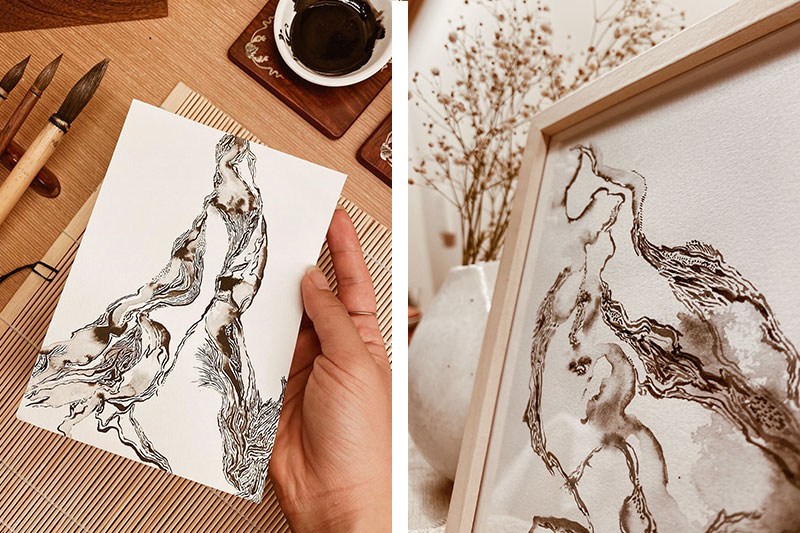
Do you think it’s easier to open up to a stranger than to people we know?
Yeah, to a certain extent I think we’re all a little afraid of judgement and being honest with ourselves. In today’s culture of hurry and business, we don’t sit long enough to see ourselves, to experience our own insecurities and dark emotions. So we move on from distraction to distraction. When we speak to people we don’t know, we feel more at ease because we have the safety of knowing that they’re not going to know everything about us – they don’t know the full story. Honestly, I wish that we would have more honest conversations with the people close to us, because I think there’s a need for depth beyond superficiality in our relationships.
How does art break those boundaries?
On the topic of dark emotions and hard things to process, I find it easier to communicate what I’m feeling through visual expression, as opposed to allowing somebody to see me cry, break down, or have a panic attack. There’s a lot of stigma in our culture for a lot of these things. Specifically in Hong Kong and other East Asian cultures, we don’t give space to acknowledge each other’s emotions – whether positive or negative. Art gives us a space to detach from any feeling of shame or judgement. When we present that to another person, at least for me, I feel more at ease knowing that they’re not judging me, rather, they’re judging the visual piece in front of them.
I think that points to the fact that we are not our feelings. We are not ‘hate’ or ‘anger’ itself, we are simply humans that carry these emotions throughout our lives, and we experience them in complex and nuanced ways. We don’t experience ‘happy’ or ‘sad’ in individual segments. Emotions are layered on top of each other and so, through art, we’re able to express that and explore those things without feeling this defining sense of identity.
Future plans?
My friend and I are hoping to start an online gallery for artists that are marginalised, underrepresented, and that have smaller followings. We specifically want to uplift voices of artists of colour and artists that might not necessarily get representation through larger institutions like museums or proper galleries, because it always requires some kind of cultural or social clout that they might not have acquired yet.
For Fonder Studio, I’d like to move forward as a brand consultant and creative strategist for emerging artists, individuals, and businesses. It’s yet to be explored fully, but I’m also looking into life coaching that combines my passion for mental, emotional, physical, and relational health into some form of educational content like coaching, mentorship – things like that!
Related Articles
Embrace: Photography Project Celebrates Gender Identity & Authenticity
#TattooGirlsJP: Breaking the Stigma Against Tattooed Women in Japan
The Woman Revitalising Australia’s Art Scene With Her All-Women Art Gallery
